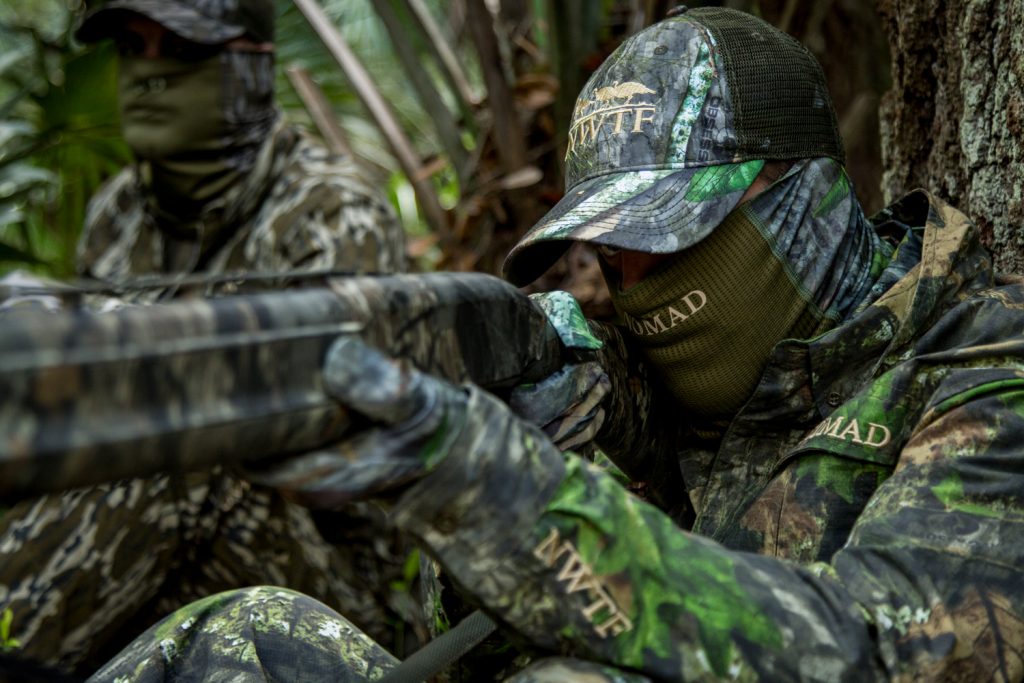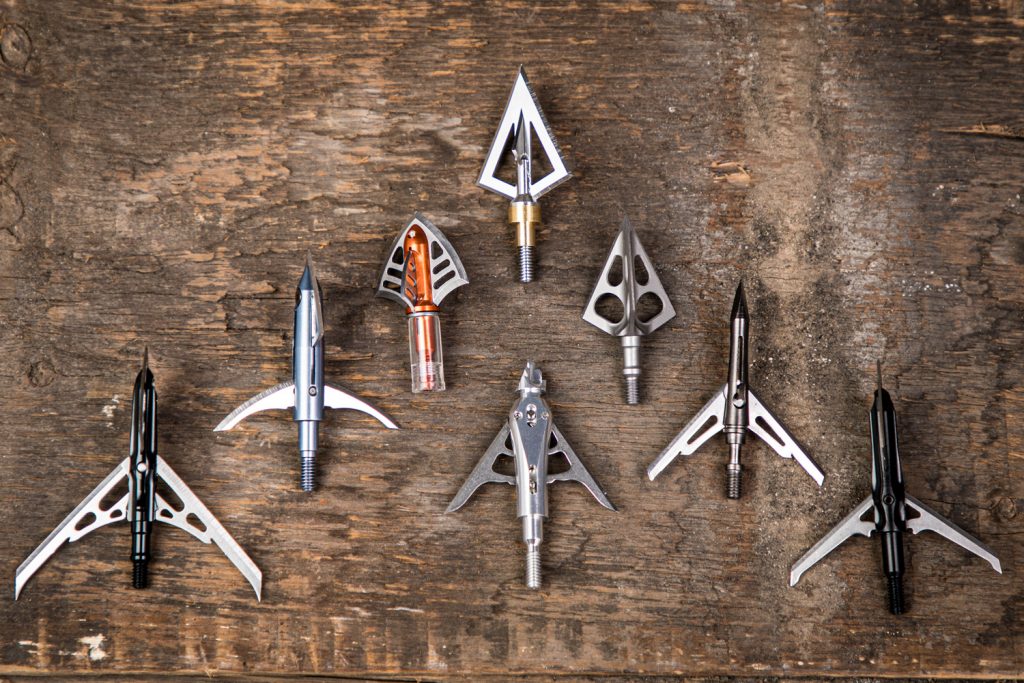Turkey hunting is an exciting outdoor activity that appeals to many hunters, especially beginners. With the right preparation and knowledge, even someone who has never turkey hunted before can have a successful first hunt. This complete guide covers everything a beginner needs to know to get started turkey hunting.
Choose Your Gear
The gear you need to turkey hunt includes:
-
Shotgun or Bow Most beginners start with a shotgun, usually a 12 or 20 gauge. Use a tight choke like full or extra full for dense shot patterns If using a bow, make sure you are comfortable and accurate shooting it while seated
-
Camouflage Clothing: Wear camo like Mossy Oak that blends into the terrain so turkeys can’t easily spot you. Gloves and face masks help conceal movement.
-
Turkey Decoys Decoys attract turkeys and provide a focal point Hen decoys work year-round, Add a jake or tom for extra realism during breeding season
-
Turkey Calls: Start with 1 or 2 easy calls like a box or slate call. Practice basic yelps, clucks and purrs. Bring a mouth diaphragm call on your hunt.
-
Other Gear: Shooting sticks or a blind, rangefinder, extra ammo, knife, bug spray, and binoculars.
Scout and Find Birds
Scouting before the season is crucial to locate where turkeys roost, feed, travel, and strut. Their patterns change little from year to year. Drive country roads around sunrise and sunset listening for gobbles to pinpoint roost trees. Glass field edges to spot flocks. Use maps, apps like HuntStand, and cameras to mark turkey locations and patterns. Focus scouting on public land or properties you have permission to hunt.
Pattern Your Shotgun
Patterning shows where your shotgun shoots at different ranges so you know your effective range. Fire 3-5 test shots at a target from the furthest distance you plan to shoot. The pattern should stay tight with most shot inside a 10-12 inch circle. If not, try different ammo or choke tubes. Repeat at closer ranges to establish your shotgun’s maximum range.
Set Up Properly
Set up between a roosted turkey’s location and its preferred feeding area. Get in position well before fly down while it’s still dark. Sit against a large tree with shooting lanes cleared to 40 yards. Deploy your decoy(s) 10-20 yards away. Stay still and don’t wave or swat bugs once light comes up. Be ready when you hear the first gobbles.
Use turkey calls effectively
Start with a few soft tree yelps and clucks after fly down. Mimic real hens by not calling too much or loud. Work in aggressive cuts and gobbles sparingly as needed. If he hangs up, get quiet to sound distant and indifferent. Be patient and let the gobbler commit before calling again.
Stay Still and Be Patient
Turkeys have sharp eyesight and pick up on the slightest movements. Avoid waving off mosquitos or adjusting your seat. Bring Thermacell or treated clothes. If a gobbler hangs up or goes silent, don’t assume he’s gone. Stay put for hours if needed. Toms often come back through in silence.
Consider All Day Hunts
Most beginners focus on mornings but all day hunting improves your odds. Toms are still responsive after fly down and often lonely after hens leave to nest. Midday and late afternoon can be prime times to bring in roaming gobblers.
Hunt in Good Weather
Sunny, mild days after a storm front are best. Toms gobble eagerly and strut more on pleasant days. Hunt in rain with relaxed calling but be ready for silent approaches. Wind makes it harder for turkeys to hear calls and pinpoint your setup.
Scout New Areas
Have backup spots in mind in case the birds in your primary area get pressured and spooky. New private land spots or overlooked public areas can be honey holes late in the season when most turkeys have been called to and educated.
Safety First
Make sure your firearm is unloaded with the safety on when tracking, changing spots or if someone approaches your setup. Verify what’s behind and beyond your target before shooting. Use a blaze orange vest when walking to show others you aren’t game.
Following these turkey hunting tips and techniques will set any beginner down the right path for an enjoyable hunt. Patience and realistic expectations go a long way towards hunting success. Don’t get discouraged if you don’t tag out the first season. The more you hunt, the more you’ll fine-tune your skills and learn turkey behavior. Before long, you’ll be the one giving turkey advice to other beginners who ask how to hunt turkeys for the first time.

Welcome to the National Wild Turkey Federation where sharing our passion of hunting wild turkeys with new hunters is part of the mission.
The NWTFs Turkey Hunting 101 is considered the premier educational tool to learn everything you need to know about wild turkeys, their behavior and planning a successful hunt, and we’ve compiled all that information here.
Below, you will find basic information on preparing to hunt wild turkeys and links to more detailed articles on different aspects of learning to hunt and more advanced hunting techniques. From choosing your first camo, call and gun to finding like-minded hunters, this site has you covered.
Turkeys are intelligent wild animals that are wary of humans. Their keen eyesight makes up for their lack of smell and they can detect even the slightest amount of movement, so hunting them is challenging. We encourage you to learn all you can before hitting the woods to begin your turkey hunting adventures – a safe and successful hunt depends on it.
To take the full online Turkey 101 course approved and developed by the NWTF, visit https://www.todayshunter.com/turkey101/.
Hunting Seasons (and other regulations)
Doing some research on your state’s department of natural resources website can literally put the law in your hands. Knowing the laws concerning the species you will be hunting is extremely important. Can you shoot before sunrise? After sunset? How long after sunset can you shoot? These are questions that are best answered straight from the source. Just because uncle Bob said you can shoot up to an hour after sunset, does not make it the law. Know the laws before you hit the woods.
Each state declares its own seasons and bag limits for each game species. The state agency bases those decisions on science, harvest totals and much more. Whether small game or wild turkeys, be sure to know the season dates and bag limits.
Before their population declined, wild turkeys were typically hunted only in the fall. When the spring seasons were introduced, fall turkey hunting became less pursued. In recent years, as populations have climbed and then stabilized, many states reintroduced fall turkey seasons. Currently, more than 40 states have a fall season. Check your local regulations for season information or use our Spring and Fall Hunt Guides to get you started.
Depending a hunters age, hunter safety education may be required to buy hunting licenses. Apprentice licenses may be offered to first-time hunters in lieu of hunter safety education, but the new hunter must be accompanied by a properly licensed hunter before hitting the woods.
Find out what education you may need before you buy your license and go afield by visiting the International Hunter Education Association.
Wild turkeys have incredible eyesight, so you will want to conceal your movements as much as possible while out hunting. A good camo pattern for the terrain you are hunting is essential.

Mossy Oak is the official camo of the NWTF and its Obsession pattern is our go to each spring. Embedded with the NWTF logo, it is an awesome camo that blends well with the green up that happens each year. You can also be assured a portion of your purchase also comes back to the NWTF to put conservation work on the ground.
Be sure to keep your hands covered, as well as your neck and face. Turkeys can spot the slightest movements and you don’t want that to be the reason for spooking a big tom. NWTF partner, NOMAD Outdoor, offers gloves and gaiters to keep you in stealth mode while waiting out those toms.
To hunt wild turkeys in most terrains, you will need basic gear. In most states, choices for method of take for turkeys are shotgun, muzzleloader or bow. Thanks to modern turkey loads and turkey chokes, both 12 and 20 gauge do a good job at taking down a turkey. With Federal Premium Ammunitions TSS turkey loads, even .410 shotguns are viable turkey guns.

Many hunters choose to use a choke with their turkey guns to keep the pattern of the shot tight. Most choke tube companies have “turkey” choke tubes are designed for turkey hunting. Learn more about finding the right choke for your gun.
If you choose a bow, either traditional, compound or cross bow, make your choice something you are comfortable shooting from a seated position, as most turkey hunts happen from the ground.
Also to consider, hunting with a bow does present some logistical issues when hunting from a ground blind. Room is at a premium for drawing back your bow. Be sure to sit in the blind and practice drawing back your bow prior to your hunt. This will ensure you are not trying to draw too much weight on your bow as well. If you cannot comfortably sit and draw back your bow, you need to reduce your draw weight. Drawing too much weight can not only be awkward, but it can cause injury, create a safety issue and can put a damper on any hunt. Learn other beginner tips for bowhunting turkeys.

If you are bowhunting, broadheads are one of the things you’re going to want to research. We’ve put some to the test and found our favorites.
To be successful in turkey hunting, many hunters rely on calls to help bring the birds within shot range. Beginners usually find a box call the easiest to get a consistent sound. There are diaphragm or mouth calls, pot and striker calls made with glass or slate, box calls, wingbone calls and many others. Some take more practice than others. Start with one call. It doesn’t have to be the most expensive box or pot call, just a good quality call will do the trick. Learn the basic sounds like cluck, purr, putt and yelp, to start. As your ability increases, you can add the more advanced sounds and learn to create dynamics within those sounds to keep the birds listening.
As you become more familiar with the basics of hunting wild turkeys, there is certainly additional gear you may want to purchase. From high-end binoculars to mapping apps, the array of gear available is endless. One item that is common for hunters to pack is a first aid kit. Hopefully the need for one never arises, but it doesn’t hurt to be prepared.
There are also what some hunters consider “necessities.” A quality knife and a Thermacell are two that top the list, especially down in the South where the mosquitoes never really disappear. A war with mosquitoes or other biting insects is certainly not going to help you sit still while waiting on those gobblers. While a knife is great for a lot of tasks in the woods, notching a turkey tag is a great reason to have one nearby.
If you find you are lugging a bunch of gear to the woods, you may be ready for a turkey vest or backpack. Each comes with a unique set of pockets and compartments and some can be lifesavers while out on the hunt as they incorporate cushioned seats into their designs. There are many vests designed for turkey hunters including the ones our partner NOMAD Outdoors has designed.
No matter what gear you decide on, it will need care and attention throughout the season to stay in top working order. After the season is done, your gear can use a little clean-up before being packed away. Read part 1 and part 2 of our guide to “After Season Gear Care.”
How To HUNT TURKEYS: Basics With Jay Maxwell
FAQ
What does a beginner turkey hunter need?
- The Right Documentation. The most important thing to have on hand is the right documentation. …
- Shotgun. You can’t shoot a turkey without a gun to shoot at it with. …
- Shotgun Shells. …
- Camouflage. …
- Boots. …
- Turkey Call. …
- Binoculars.
What not to do while turkey hunting?
THOU SHALT NOT: Crank on Calls
Running too hard on a turkey call can be a problem, too. First, it can keep turkeys gobbling, which attracts other hunters. It can also shut down a gobbler, especially if it doesn’t like your calling.
How easy is turkey hunting?
It’s definitely challenging. Turkey have much better eyesight than most other animals, but with good camo and a lot of practice calling it’s not too difficult. The thing to remember is that if there’s a turkey in the area DO NOT MOVE. They will see you.
What is the best thing to hunt turkeys with?
Shotguns are the most popular option for turkey hunting, and like with any hunt, being prepared and comfortable with your weapon is vital. Practice shooting from several positions, especially awkward ones sitting angled with your back against trees.
How do I learn to hunt a Turkey?
Turkey Hunting Gear: Understand the appropriate gear for turkey hunting, including clothing, weapons, and calls. Turkey Hunting Tactics: Study various hunting strategies like setting up blinds and decoys, and calling techniques. Tracking and Scouting: Learn to interpret signs of turkey activity like tracks, droppings, and roosting sites.
How do I prepare for a turkey hunt?
To maximize your chances of a successful turkey hunt, it’s critical to equip yourself with knowledge before you embark on your first hunt: Turkey Behavior: Understand the habits and routines of turkeys, including their feeding times and mating rituals. This may vary by which state you hunt in and which species you plan to hunt.
How do you hunt a Turkey in spring?
Because spring turkey hunting seasons coincide with turkey breeding season, hunting tactics revolve around calling in male turkeys (toms) with female turkey (hens) noises. Toms gobble and strut to entice receptive hens. This dance drives the main activity in spring turkey hunting.
